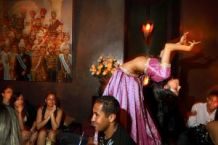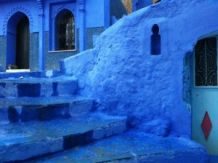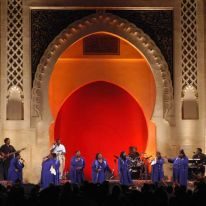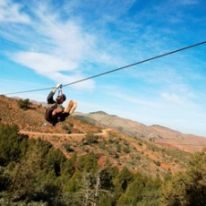Discover 8 Sacred Sites in Morocco
Morocco is steeped in mysticism and spirituality. From Morocco’s Atlantic and Mediterranean coastlines to the Sahara Desert; the kingdom is scattered with a wide range of holy and sacred sites. These holy and sacred sites are referred to as Zaouias. They are the location where Moroccan saints of Sufi, Islamic and Jewish heritage have originally been buried. These Zaouias are among the holy sites that have for centuries been part of spiritual pilgrimage to those who visit Morocco.
A zaouia has historically been referred to as an Islamic religious school or monastery. However, the original term is from the Maghreb and West Africa and is more loosely described as a sacred site that is holy which also contains a pool or fountain.
Discovering Moroccan zaouia’s offers insight into Morocco’s people, traditions, values, and their unique culture. It lends those who interested in historical, religious and spiritual sites with an insider view of the culture. Exploring Morocco’s 8 Sufi Sacred & Holy Spiritual sites can be a rewarding part of touring Morocco.
Morocco’s various ethnic Berber and Muslim tribes made the spiritual journeys across the ancient Maghreb. During their travels, they discovered or buried their saints and those of honor. The saints are either historical figures or related to the Sufi brotherhoods in Morocco. The Sufi Brotherhoods are a mystical community and lay claim to an important part of the country’s past and present spiritual and religious history. There are hundreds of saints in Morocco and the Zaouias are the former residences of saints that have been transformed into places of prayer and ceremony.
Morocco’s Sacred Spiritual Sites & Zaouias
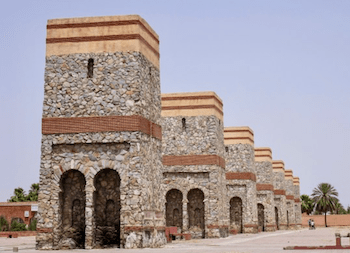
1. The Seven Saints of Marrakech
Marrakech has over 200 awlyas, a resting places for religious and spiritual men often visited by Muslims on pilgrimage en route to Mecca. Marrakech’s Seven Saints, Sabtou Rijal, “Seven Men” is the most significant stop. Since the 17th century, Moroccans came to believe that visiting these seven saints could take away their ailments, fulfill wishes, and achieve peaceful states of mind. The saints include Sidi Youssef Ben Ali, Qadi Ayyad, Sidi Bel Abbas, Sidi Suleiman Al Jazuli, Sidi Abdel Aziz, Sidi Abdullah Ghazouani, and Imam Souhaili.
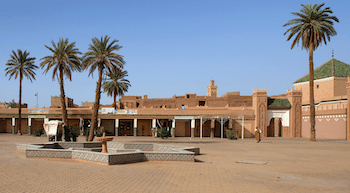
2. Zawaiya (Zaouia) Naciria, Tamagroute, Zagora
Zawaiya (Zaouia) Naciria was founded in the 17th century. The shrine is one of the most respected in the Draa Valley region. It has played the role of an important Sufi and science center. It is connected with Mohamed Ben Nacer, a disciple of Abu Hafs Omar Ibn Ahmed Al Ansari, and the mystical Sufi principles of Tariqa Chadhiliyya. This zaouia is home to a library filled with well-preserved manuscripts, a 500-year-old Pythagorean book in Arabic, and a three-hundred-year-old copy of the Koran.
3. Jbel Gueliz, Marrakech
Abou El Abbas Sebti, one of the Seven Saints, has a zaouia dedicated to him in Jbel Gueliz where he spent 40 years alone. He is originally from Ceuta yet known as the patron saint of Marrakech. His tomb rests inside the Gueliz Mountain and attracts blind men and women; he was known for helping the poor and the ill.
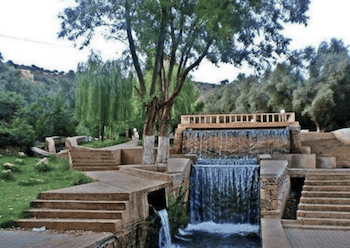
4. Zaouiat Sheikh, Beni Mellal, Middle Atlas
Zaouiat Sheikh is the Sanctuary of the pioneer of Sufism in North Africa, Sidi Ya’Ata Bouazza and located in the Middle Atlas region. This 16th-century Sheikh is a Masmuda Berber from the mountainous Hasqura region and considered well versed in performing miracles. Many of his disciples walked barefoot from Meknes to his mountain tomb as signs of devotion; his most famous disciple is Abu Madyan, an influential Andalusian mystic, and great Sufi master. Legend has it that Sidi Bouazza saw a lot of potential in Madyan and upon receiving him, treated him harshly by leaving him sitting at the door without food for three days. Maydan was recorded saying that Sidi Bouazza was an exceptional Sheikh, he only spoke Amazigh (Berber) yet still influenced many followers.
5. Sidi Ahmed Barnoussi Zawiya, Fes
Sidi Ahmed Barnoussi Zawiya was born in Fes in 1482. Barnoussi contributed many books and essays about alchemy and science to Sufism. He is the founder of the Zerrouki Tarika and best known for “The Meanings of Allah’s Attributes.” A learned man, Barnoussi took Sufi pilgrimages, studied from sheikhs in Cairo, and took inspiration from the scholars of Fes’ Quarawiyyine school. He had many disciples of his own including Sidi Al Hattab al Kabir, Imam Shaarani and Abul Hassan Bekri, all of whom became well-known sheikhs. The Sidi Ahmed Barnoussi resides in Fes.
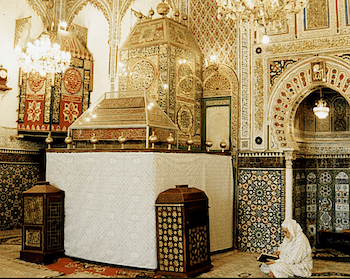
6. Moulay Idriss Zerhoun, Moulay Idriss
This citadel is Morocco’s holiest city and a pilgrimage destination. Some Moroccans come here 7 times in their lifetime because the pilgrimage to Mecca is too expensive. There is a saying that six pilgrimages to Fes equal one trip to Haj in Mecca. This sacred city is considered the birth city of Sufism and was founded by Moulay Idriss in 789.
Morocco’s ruler Moulay Idriss was originally known as Idris ibn Abdallah. He is considered Morocco’s most important ruler and is historically significant to Sufism because he is the great-grandson of Prophet Muhammed. He brought Shia Islam to Morocco, one of the two main branches of Islam. As an heir to the Umayyad Caliphate in Damascus, he participated in the revolt against the Abbasid dynasty, who usurped the Umayyads. When Moulay Idriss married the princess of the local tribe, the city was established and Morocco’s fourth dynasty, the Idrisid dynasty emerged. The marriage also gained him the confidence of the Berber tribes who felt that the ruler was powerful Imam. It takes about five hours to explore the city – built on two hills, the homes ascend and there is a cliff with unobstructed views that should not be missed.
7. Zaouia Moulay Idriss, Fes
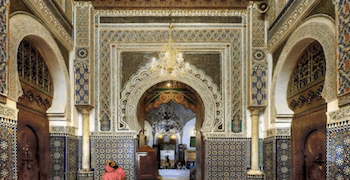
Fes is a sacred city in Morocco that is considered the cradle of spirituality and mysticism. Moulay Idriss’ son, Idriss II, is credited for founding Fes in 808. The city has been historically recognized for its tolerance, peace, and knowledge. Idriss II was said to have exceptional talents. By the time he reached 8 years old, he had memorized the Koran and his wisdom was comparable to the wisest men in Fes. Idriss II had a deep respect for Islam that was felt throughout Morocco when he became ruler at the age of thirteen (805). The rulers of the Idrisid dynasty opened the doorway to Arabization over the centuries of the Almohad, Marinid and Saadian dynasties. This coincides with when some of Morocco’s finest examples of Islamic architecture emerged.
Fes is home to the Zaouia of Moulay Idris II. Like many other Zaouias, the Mausoleum is characterized by a few elements such as a horn and a qo’bba. The horhornm is the sacred space surrounding the building, everything inside it, and the surrounding tomb. The qo’bba is the octagonal shaped building holding the tomb. The grave inside the zaouia is the holiest part of the building. Many examples of great mosques, spiritual centers, and zaouia’s can be found in Fes which has been a UNESCO city since 1981.
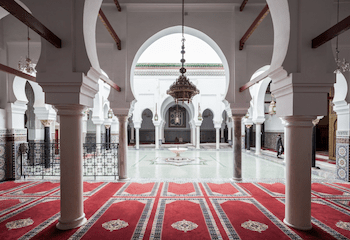
8. Al Quaraouiyine Mosque and Zawiya of Sidi Ahmed Tijane, Fes
the Al Quaraouiyine Mosque pertains to the Al Quaraouiyine University, the oldest university in the world. The Mosque can hold 22,000 worshippers and at one point was the largest mosque in Africa. Within walking proximity of this mosque, you can also experience the Zawiya of Sidi Ahmed Tijane. Known for a turquoise colored minaret, the Zawiya is dedicated to the founder of Tijani, a branch of Suni Islam that places great importance on culture and education.

